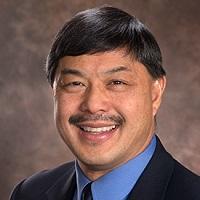Community health centers, which are also known as Federally-Qualified Health Centers (FQHCs) or community clinics, are a vital force for widening healthcare access, reducing inequality, and improving health equity in America. Their creation 60 years ago was led by activists who built on the momentum of President Johnson’s War on Poverty and the Civil Rights Movement. They lobbied for a community-based healthcare model that would uplift the nation’s poorest citizens and the idea was simple: target the roots of poverty by combining community resources with federal funding to establish neighborhood health clinics, particularly in medically underserved areas (MUAs).
One of the key advocates in that initial effort was Dr. H. Jack Geiger, who, as a young doctor studying in South Africa, observed how a local, community-based health model improved health outcomes for those most in need. His work, along with the work of many others, led to the first two community health centers being funded in the US in 1965 and 1967.
Today, America’s community health centers are the primary medical home for over 32.5 million people across 16,000 rural and urban communities. These health centers provide affordable and highly efficient primary and preventive care to all residents of their communities, regardless of income level or insurance status, and now represent the backbone of America’s primary care health system. They are tackling not only the symptoms of illness, but the environmental causes of health inequity, such as poverty, racism, food insecurity, mental illness, unemployment, and substance abuse. As the nation faces down a nationwide primary care crunch, community health centers have never been more important.
National Health Center Week (NHCW) has been celebrated for over 30 years; this year’s event takes place August 3-9, 2025. It’s an opportunity to shine a light on the health disparities that still exist in America today, and how a community-based healthcare model can help address those disparities.
Public support and federal funding are integral components of community health centers, and healthcare providers and civil rights activists are continually advocating for their expansion so that they can continue to grow a primary care health system that’s governed by (and working for) those who need it most. But that funding–and community health centers themselves–are under threat.
To learn more about the importance of America’s community health centers, and how you can help advocate for them, read on.
Meet the Experts: Dr. Ron Yee & Dr. Margaret Flinter

Ron Yee, MD, MBA, FAAFP
Dr. Ron Yee served as the CMO of the National Association of Community Health Centers (NACHC) from 2013 to 2025. He received his MD from Oral Roberts University School of Medicine and completed both his family practice residency and chief resident position through UC San Francisco in Fresno, California.
For over 20 years, Dr. Yee was employed by United Health Centers, an eight-site community-migrant health center in Parlier, California. A graduate of the NACHC Excel Leadership Program, Dr. Yee has developed a career-long passion for patient care and communicates a unique blend of clinical practice style efficiency, care team focus, practical financial applications, and organizational transformation.

Margaret Flinter, PhD, APRN
Dr. Margaret Flinter is the senior vice president and clinical director of the Community Health Center, Inc. (CHC). She received her BSN from the University of Connecticut, her MSN from Yale University, and her PhD at the University of Connecticut.
A family nurse practitioner (FNP) since 1980, Dr. Flinter has served as both clinician and an executive leader at CHC, helping to transform it from a storefront clinic into one of the nation’s largest FQHCs. In 2005, she founded the Weitzman Center (now Weitzman Institute) as the research and development arm of CHC. Dr. Flinter is the co-host of a weekly radio show, Conversations on Health Care, which connects people with issues of health policy, reform, and innovation.
Dr. Yee and Dr. Flinter spoke to HealthcareDegree.com in 2021.
What Makes Community Health Centers Unique
“Community health centers are drivers of health equity,” Dr. Yee says. “Born in the 1960s out of America’s struggle for equality and social and economic justice, health centers have always worked to improve not only the health and well-being of underserved people but also to empower people to become actively involved in solving issues unique to their needs and communities. Increasing equity and reducing health disparities are not aspirations, but rather are daily practices.”
Community health centers are more than just ordinary medical clinics: they also connect patients to crucial resources related to education, transportation, translation, food, employment, housing, and mental health. And they provide care regardless of a patient’s ability to pay, charging on a sliding scale to ensure that the most vulnerable individuals and families receive the help they need. This communal approach even extends to the way that the health centers themselves are governed.
“To be a federally qualified health center (FQHC), you must have a board of directors which has full control over the health center program, and a majority of that board must be active patients of the community health center,” Dr. Flinter says. “It’s something that is fundamental to community health centers, and sounds so simple but is radical when you consider it. It means that community health centers, which serve an overwhelmingly low-income and very racially diverse population, are controlled by the people who have direct experience of needing and using their services.”
The Benefits of Working at a Community Health Center
FQHCs are required to provide a wide range of primary care services, broadly defined to include full scope preventive care, health promotion, chronic illness management, behavioral health, and oral health services. This is a comprehensive and collaborative work environment that brings together a wide array of different health professions: doctors (MDs), registered nurses (RNs), nurse practitioners (NPs), physician assistants (PAs), dentists (DDSs), pharmacists (PharmDs), medical assistants, dental assistants, and other certified health personnel.
“The acronym (FQHC) doesn’t begin to describe such a vibrant, passionate, motivated, and I would dare to say noble, movement,” Dr. Flinter says. “It is a very mission-driven area, and the standards of care are high and explicit. The whole point is to make sure that the people who are most in need of care get it, and they not only get primary care—they get really outstanding, comprehensive primary care.”
Community health centers also play a significant role in health professions’ training, both by directly sponsoring residencies and fellowships but also through partnerships with colleges and universities. This is a strategic investment in health centers’ future workforce.
Health centers also are experts in removing obstacles to care for low-income and uninsured patients. They have sliding fee scales for all clinical services provided at their centers and also have systems in place to get prescriptions medicines, lab work, and diagnostic testing to their patients. Working here, health professionals are better able to provide care to those who need it most.
“It’s extremely frustrating to provide healthcare only to find out the people you’re providing it to cannot afford to go and get the prescription filled or get the lab test done, or do any of a host of other things,” Dr. Flinter says. “Community health centers are required to have solved many of those problems. You can’t solve every problem all the time, but there’s a strategy for helping people get medications filled and get necessary lab tests done. And as ideas develop within the health center world, I think there’s also a good sharing of best practices, and ways to help others develop those same strategies.”
Advocacy Issues for Community Health Centers
As organizations that serve low-income people, community health centers need a strong partnership with the federal government to do what they do. They don’t require a blank check, and the federal government doesn’t fully fund them, but as community health centers grow in size and scale, their funding needs to grow in tandem.
“We are caring for a population that across the board faces greater health challenges, but in addition, we care for many special populations including the homeless, agricultural workers, people living with HIV, and people with significant behavioral health or substance use disorders,” Dr. Flinter says. “Federal support is important not just to help offset the care we provide to uninsured people, but to help us invest in growth, expansion, new facilities, and new programs to address the most pressing needs in a community. On our end, we also need to be innovators and to constantly test out new ways of delivering high-quality care.”
But community health centers are advocating for more than just their own federal authorizations. Expanded Medicaid coverage, increased infrastructure development, and boosted social services are all points of advocacy that benefit community health centers and the people they serve.
“A lot has evolved over the years, but much of what was laid out in the original authorizing legislation for community health centers is unassailable,” Dr. Flinter says. “The fundamental bedrocks, like a consumer-dominated board and a requirement to provide a full range of primary and preventive care services, are a lot of what has kept the community health center movement growing—growing in size and growing in its ability to meet its mission.”
The Future of Community Health Centers
“For the future, we’re taking a hard look at infrastructure needs to meet an anticipated ramped-up demand for quality, affordable primary care,” Dr. Yee says.
In the near term, the increased demand for primary care will come from patients who have been staying home during the pandemic but now need routine and preventive care. But in several areas, hospitals or clinics have closed, leaving residents without easy access to primary care providers. The expansion of community health centers will be crucial in addressing this increased need, and the needs of an increasingly aging population.
Going forward, community health centers will renew their commitment to equity and social justice, and place greater emphasis on strategies that address social determinants of health. They’ll build out an adaptive, skilled, and motivated workforce, which works with governing boards to develop broader and more meaningful partnerships. And they’ll continue to evolve through the adoption of innovative technology and emerging best practices that help meet the needs of the populations they serve.
“Community health centers have undergone many changes over the years,” Dr. Yee says. “They have expanded services, adopted new quality standards, and implemented new technologies to meet the needs of their patients. Health centers will continue to be drivers of health equity, especially in times of crisis.”
Update 2025: Celebrating Success and Confronting Challenges
Over their 60 year history, community health centers have become the foundation of the U.S. healthcare system. As the nation’s largest primary care network, they continue to provide high quality, team-based, comprehensive health services to one in every ten people in the country. And, governed by boards with a 51 percent patient majority, they deliver on the promise of community-based health. America’s healthcare system doesn’t work without them.
But even as patient volume hits record-setting levels, financial uncertainty remains a challenge. Inflation-adjusted federal funding per patient dropped by 27 percent between 2015 and 2021, even as patient demand increased by 24 percent over the same period (NACHC 2023). The average CHC operating margin fell from 4.5 percent in 2022 to just 1.6 percent in 2023 (KFF 2025). Expiration of continuous Medicaid enrollment protections in early 2023 led to millions of patients losing coverage, with many of those individuals continuing to rely on CHCs for care, but without reimbursement. Taken together, these factors have placed many CHCs in precarious positions, even as their role in the safety net has never been more vital (Commonwealth Fund 2024). And there are more choppy waters ahead.
“The recently enacted “One Big Beautiful Bill Act” (OBBA) jeopardizes health coverage for an estimated 4 million Community Health Center (CHC) patients and is projected to cost CHCs $7 billion annually in increased uncompensated care costs from new uninsured patients, with an estimated $13 billion in total economic impact,” says Amy Simmons Farber, Vice President for Communications and Public Relations at NACHC. “There will be considerable economic ripple effects as a result.”
NACHC estimates that the law could trigger 34,000 CHC job losses and 1,800 CHC site closures. Already operating on thin margins, CHCs will need to make incredibly difficult decisions on how to cut services, reduce essential staff, and close sites altogether when a large portion of their funding expires at the end of September. Using analysis based on a recent study, this level of disruption could lead to 5,000-6,000 preventable CHC patient deaths per year. The need for health professionals to advocate for community health centers has never been more acute.
“The more people understand the transformative impact of the Community Health Center model, the more they support it,” Farber says. “So the first thing to do is help raise awareness among your networks about what health centers do and why they need support.”
Providers can raise awareness by boosting the visibility of NACHC’s social media posts (on LinkedIn, Facebook, Instagram, and X), which educate the public on the critical role health centers play. Providers can also help the cause by connecting with their local health centers and signing up to join NACHC’s list of health center supporters. With continued support, these health centers can press forward and tackle the urgent challenges facing the American healthcare system.
Perhaps no challenge is more urgent than the primary care crisis. Farber points out that NACHC’s estimates put the number of Americans lacking access to primary care at 100 million (NACHC 2023). Health centers today already provide care to 32.5 million Americans. With additional funding, they could scale up and close the primary care gap substantially. And a larger, stronger network of community health centers would be a powerful and shaping force for the future of the American healthcare system.
“Health centers have always been innovators, whether it’s in using a multidisciplinary team-based approach to care to adopting technology to help overcome barriers to care,” Farber says. “We anticipate health centers will continue to be at the forefront of imaginative new solutions to healthcare challenges.”
How to Get Involved with National Health Center Week
Community health centers have never been more important. To learn more about how you can get involved with community health centers, and how you can help advocate for the community-based healthcare model, check out some of the resources below.
- Health Center Advocacy Network (HCAN): With more than 175,000 advocates, HCAN represents a robust grassroots network fighting for good policies and sustainable funding for America’s community health centers.
- National Association of Community Health Centers (NACHC): Founded in 1971 to promote efficient, high-quality, comprehensive healthcare that is accessible for all, NACHC serves as the leading national advocacy organization in support of community health centers. Follow them on LinkedIn, Facebook, Instagram, and X.
- National Health Center Week (NHCW): This year’s National Health Center Week takes place August 3-9, 2025, and the official website includes important information on focus days, advocacy tools, and event ideas.

Matt Zbrog
WriterMatt Zbrog is a writer and researcher from Southern California. Since 2018, he’s written extensively about trends within the healthcare workforce, with a particular focus on the power of interdisciplinary teams. He’s also covered the crises faced by healthcare professionals working at assisted living and long-term care facilities, both in light of the Covid-19 pandemic and the demographic shift brought on by the aging of the Baby Boomers. His work has included detailed interviews and consultations with leaders and subject matter experts from the American Nurses Association (ASCA), the American College of Health Care Administrators (ACHCA), and the American Speech-Language Hearing Association (ASHA).